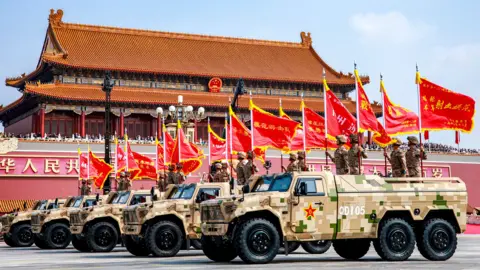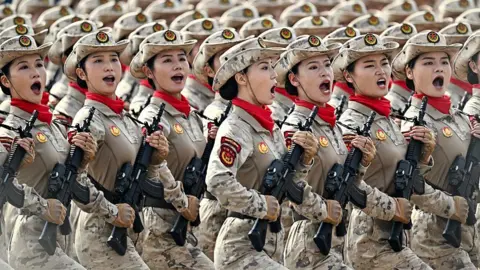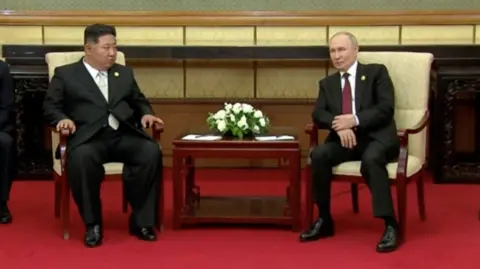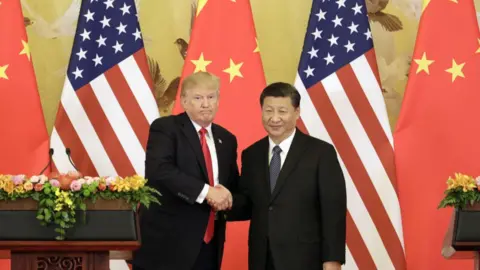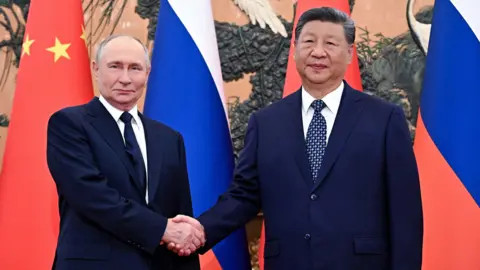Despite the hurdles posed by U.S. tariffs and a struggling real estate market, China's economy has managed to outperform forecasts, highlighting its resilience. Official data indicates that the world’s second-largest economy grew by 5.2% in the three months leading up to June compared to the same period last year. This growth rate surpassed the anticipated 5.1% projected by economists, although it is a slight decline from the previous quarter.
The positive growth figures can partly be attributed to the measures introduced by the Beijing government to bolster the economy, along with a fragile truce in trade relations with the United States. The National Bureau of Statistics of China remarked that the economy has "withstood pressure and made steady improvement despite challenges." This growth was driven by a 6.4% increase in the manufacturing sector, spurred by rising demand for 3D printing technology, electric vehicles, and industrial robots.
However, the retail sector has shown signs of struggle, with growth in retail sales declining to 4.8% year-on-year in June, down from May's 6.4%. Additionally, official statistics revealed that new home prices in China fell at the steepest monthly rate in eight months during June, indicating ongoing difficulties in the property market despite government efforts to stabilize housing prices.
Although analysts initially feared a stronger impact from U.S. tariffs on China's economy, experts now view it as "highly resilient." Economists cite the boost in exports before the anticipated imposition of new tariffs as contributing to growth. Yet, they caution that the second half of the year may present increased uncertainty, leading to calls for more robust government stimulus. Nonetheless, many believe that China is on track to meet its annual growth target of around 5%.
Economist Dan Wang from Eurasia Group indicated that while the economy is expected to meet the minimum politically acceptable growth level of 4%, there are concerns over how much it could lag behind its targets. In an escalating trade conflict, the U.S. has imposed significant tariffs on Chinese imports, which in retaliation prompted Beijing to impose duties on some American goods. Although these tariffs are currently paused following negotiations, a long-term resolution remains pressing, with a deadline set for August 12 for a deal to be reached between Washington and Beijing.
The positive growth figures can partly be attributed to the measures introduced by the Beijing government to bolster the economy, along with a fragile truce in trade relations with the United States. The National Bureau of Statistics of China remarked that the economy has "withstood pressure and made steady improvement despite challenges." This growth was driven by a 6.4% increase in the manufacturing sector, spurred by rising demand for 3D printing technology, electric vehicles, and industrial robots.
However, the retail sector has shown signs of struggle, with growth in retail sales declining to 4.8% year-on-year in June, down from May's 6.4%. Additionally, official statistics revealed that new home prices in China fell at the steepest monthly rate in eight months during June, indicating ongoing difficulties in the property market despite government efforts to stabilize housing prices.
Although analysts initially feared a stronger impact from U.S. tariffs on China's economy, experts now view it as "highly resilient." Economists cite the boost in exports before the anticipated imposition of new tariffs as contributing to growth. Yet, they caution that the second half of the year may present increased uncertainty, leading to calls for more robust government stimulus. Nonetheless, many believe that China is on track to meet its annual growth target of around 5%.
Economist Dan Wang from Eurasia Group indicated that while the economy is expected to meet the minimum politically acceptable growth level of 4%, there are concerns over how much it could lag behind its targets. In an escalating trade conflict, the U.S. has imposed significant tariffs on Chinese imports, which in retaliation prompted Beijing to impose duties on some American goods. Although these tariffs are currently paused following negotiations, a long-term resolution remains pressing, with a deadline set for August 12 for a deal to be reached between Washington and Beijing.












